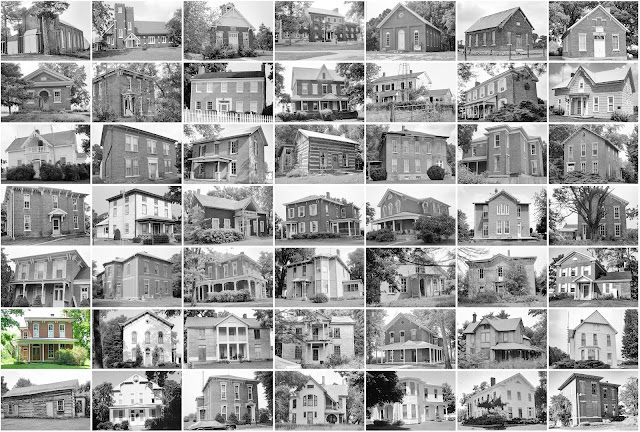Tippecanoe County, Indiana
Founding: 1826
Parent county: Unorganized territory
Parent county: Unorganized territory
Namesake: The Battle of Tippecanoe
Seat: Lafayette (1826–)
Seat: Lafayette (1826–)
Land area: 500 square miles
Population (2020): 186,251
Population (historic): 7,187 (1830); 19,377 (1850); 33,515 (1870); 38,659 (1900); 47,535 (1930)
Periods of population growth: pre-1830–1880; 1890–2020
Subdivisions: Two cities; five towns; six CDPs; 13 townships
Pre-1940 residences (estimated): 9,368 (12.5%)
Pre-1940 housing survival rate: 61.1%
Pre-1860 housing survival rate (1940): 11.9%
Pre-1940 housing survival rate: 61.1%
Pre-1860 housing survival rate (1940): 11.9%
Farm housing in disrepair (1950): 5.5%
Nonfarm housing in disrepair (1950): 7.5%
Average farmhouse value (1930): $1,785
Average outbuilding value (1930): $1,638
Average farmhouse value (1930): $1,785
Average outbuilding value (1930): $1,638
Average farmhouse size (1940): 6.6 rooms
Number of farms (1920): 2,401
Average farm size (1920): 109.3 acres
Sources of settlement: Ohio, Germany, Ireland, Pennsylvania, and New York
Number of farms (1920): 2,401
Average farm size (1920): 109.3 acres
Sources of settlement: Ohio, Germany, Ireland, Pennsylvania, and New York
___________________________________________________________________________________
Lafayette
Namesake: The Marquis de Lafayette, Continental Army general
Founding: 1825 (platting); 1826 (post office); 1837 (incorporation)
Population (2020): 70,783
Population (historic): 6,129 (1850); 13,506 (1870); 18,116 (1900); 26,240 (1930)
Periods of population growth: pre-1850–1970; 1980–2020
Pre-1940 residences (estimated): 6,225 (18.3%)
Pre-1940 residences (estimated): 6,225 (18.3%)
___________________________________________________________________________________
___________________________________________________________________________________


Comments
Post a Comment